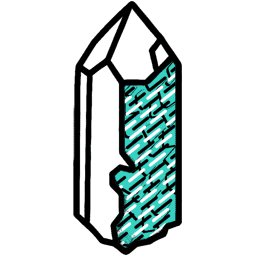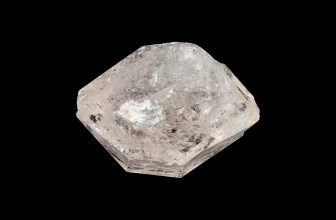Elestial Crystals
 The Stairways of Light and Wisdom
The Stairways of Light and Wisdom
Imagine holding a crystal that seems almost alive, its surfaces layered like the steps of a grand cathedral, each ridge climbing toward the sky. These are elestial crystals, sometimes called skeletal quartz, jacare quartz, or cathedral quartz. At first glance, they might seem like ordinary quartz points. But look closer, and you’ll see a labyrinth of stepped terminations, etched surfaces, and intricate textures – like the crystal itself is whispering stories of ancient geological mysteries.
Have you ever wondered why some crystals feel different, almost purposeful, in your hand? Elestials are thought to hold transformative energy, guiding introspection and higher awareness. Their layered geometry is not just visually stunning; it reflects a journey of growth, interruption, and renewal, both in the Earth and, metaphorically, within ourselves. They are geological records, yes, but also, for many, portals to inner insight.
Geological Formation
Elestials are born in dynamic, ever-changing environments. Unlike standard quartz points that grow steadily, elestials experience pauses, disruptions, and bursts of new growth. These interruptions leave visible fingerprints – internal cavities, stepped ridges, and intricate skeletal forms.
Here’s how nature sculpts them:
- Quartz begins forming in a hydrothermal environment, rich in silica and mineral-laden fluids.
- Fluctuations occur – shifts in temperature or pressure disrupt the smooth growth of the crystal.
- Layered deposition takes place, creating stepped surfaces and overlapping terminations.
- Trapped fluids or gases often become inclusions, adding depth and texture, sometimes forming rainbow-like iridescence within the crystal.
These features make elestials unmistakable: overlapping terminations, etched “stair-step” faces, and hollow or cavernous zones inside the crystal. Each layer is a snapshot of the Earth’s history – a record of environmental change frozen in silica. Geologists marvel at these structures, seeing in them the story of shifting energies and evolving landscapes.
How to Recognize an Elestial
Ever stared at a crystal and felt like it was built in chapters, each layer telling a different part of the story? That’s the experience of holding an elestial. Their appearance is striking – almost otherworldly – and once you’ve seen one, you’ll never confuse it with a regular quartz point again.
Elestials often look as though they’ve grown in motion. Their surfaces ripple with deep geometric etchings, stacked ridges, and layered terminations that seem to fold into one another. Some points are translucent and smoky, others clear and bright, and some shimmer with trapped rainbows tucked beneath skeletal walls. They can feel ancient, even when newly unearthed – like small, crystalline libraries containing pages of Earth’s memory.
Many contain inner chambers or hollow pockets, giving the illusion of a crystal within a crystal. These structures aren’t flaws; they’re signatures of the ever-changing environment in which elestials grew. Look closely, and you might see milky phantoms, wispy inclusions, or tiny pockets holding microscopic bubbles.
You’ll also find several distinct varieties:
- Smoky Elestial Quartz with deep, grounding browns and greys.
- Clear Elestial Quartz offering luminous transparency and window-like clarity.
- Amethyst Elestials with violet tones tied to emotional release and spiritual expansion.
- Citrine Elestials in warm golden hues, associated with manifestation and vitality.
What sets them apart from other quartz? Regular points grow clean, sharp edges. Elestials grow histories. Their surfaces look more like flowing sculptures than simple geometric shapes – as if time carved them intentionally.
Where They Are Found
Why do some parts of the world produce more elestials than others? It comes down to geology – specifically, regions where heat, pressure, and mineral-rich fluids have danced unpredictably over long periods of time.
Brazil, especially Minas Gerais, is one of the most famous sources. The elestials found there are often smoky or clear, full of depth and complexity, and prized by collectors for their dramatic cathedral formations.
Madagascar produces equally breathtaking crystals. Its elestials, particularly the smoky and amethyst varieties, seem to weave both softness and intensity into their layered structures.
In Namibia, the quartz tends to grow with brilliant clarity, highlighting the sharp stepped geometry that makes elestials so recognizable. These crystals can appear almost architectural, like tiny ancient temples made of light.
Even Arkansas (USA) contributes its own variations, each shaped by localized temperature fluctuations and fluid chemistry.
No two elestial crystals are ever the same. Each one is a geological fingerprint. Environmental quirks – a sudden cooling, a shift in mineral content, a tiny trapped bubble – create unique structures that can’t be replicated. This is why elestials feel like one-of-a-kind companions rather than interchangeable specimens.
Navigating Energy Through Layers
Have you ever felt stuck in an old emotional loop, unsure how to shift forward? Or sensed an inner nudge to evolve, but didn’t know where to begin? This is where many turn to elestials. Their layered structure isn’t just visually symbolic – it’s energetically symbolic, too.
Often called the “Crystal of Evolution” or “Crystal of Angels,” elestials are associated with deep transformation. Their energy doesn’t rush or overwhelm; it unfurls in waves, helping you access insight one layer at a time. Many people use them during meditation to encourage emotional release, past-pattern clearing, or connection with higher consciousness.
Their multiple terminations are said to amplify multidimensional awareness – like several energetic antennas pointing in different directions at once. This quality makes elestials useful for dreamwork, intuitive development, and receiving inspiration from quieter, subtler realms of the mind.

 The Stairways of Light and Wisdom
The Stairways of Light and Wisdom




















